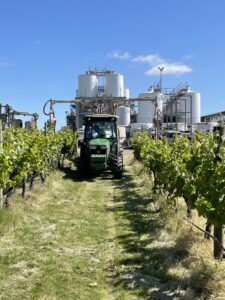
Ethyl carbamate and urethane is formed during the production of wine resulting from the reaction between urea or other related precursors and ethanol. Urea is derived largely from the yeast metabolism of arginine, which is an abundant amino acid in grape juice. The rate of production of ethyl carbamate is influenced by the concentration of urea and other precursors and temperature. Wines made from grape varieties which contain high levels of arginine can potentially have relatively higher levels of ethyl carbamate. In the production of fortified wines, partially fermented must is fortified at a time when the concentration of urea is high. This can lead to higher levels of ethyl carbamate in fortified wines relative to table wines. Ethyl carbamate is a suspected mild carcinogen, the maximum level is, therefore, limited by regulation in many countries.



